London Field Trip: The Ultimate Country Walk
Two iconic stately homes, fields of sheep, oasthouses, a Cromwellian church, and a medieval deer park
When visiting London, the English countryside always feels a world (and another vacation) away, but did you know you can wake up, take a magnificent all-day scenic walk in the heart of Kent and be back in town by dinner? I have done this 9 mile walk at least 10 times since the 1990s (most recently last September), in all kinds of weather, and it has never disappointed. I have taken 8-year-olds, 70-year-olds and everyone in between, and no matter how young or how old, they all said it was one of their most favorite days EVER.
The bible you need is the Time Out Guide to Country Walks and our walk is Number 36: Borough Green to Sevenoaks (I still use the book, it’s brilliant, but the directions are also HERE for free). No car necessary; your adventure begins and ends at a train station. The walk itself takes approximately 6.5 hours and is an idyllic journey on foot through the soul-affirming loveliness of Shakespeare’s “green and pleasant land,” through picturesque villages and fields of sheep and lavender, and includes stops at two magnificent National Trust homes, Ightham Mote and Knole House.
Not too long after you leave Borough Green station, London already feels a million miles away. Turn a corner and up pops a wooden stile, framing a perfect view of the entire countryside. Cross a field and look, there’s an oasthouse with traditional conical roofs once used for drying hops in.
Because of its nationally protected network of public footpaths, England is a walker’s paradise, and periodic stone markers are a reminder that cultural pilgrims have been treading these paths for centuries.
About four miles in, you will come upon Ightham Mote (pronounced “item”). Oh, this house. A medieval moated manor built in the 14th century, it’s still a bit of a secret which is crazy, as it’s said those who visit Ightham Mote fall so under its spell they make repeat visits for the rest of their lives (hand raised).
Traces of past inhabitants linger everywhere. In the entrance hall, wood-paneled walls provide a burnished backdrop for family portraits, ferns and old rugs. In the kitchen, a wood counter battered to perfection over generations is a living record of meals made. It’s the stuff deVol and Plain English catalogs are made of, in its original form.
In a shady corner, a brown ceramic jug and a pair of old mustard pots keep company on a mantel. Outside in the hall, a framed assemblage of beloved staff keeps their memories very much alive.
The Drawing Room with its rare hand-painted Chinese wallpaper depicting exotic birds, flowers, and trees is exquisite. The outlines were inked in woodblock and the colors added by hand.
In another wing, floral slip-covered sofas and soft gray walls are evidence of Ightham Mote’s last resident, an American gentleman who swooped in to save it in the 1950s when it was under threat from being sold and its treasures dismantled. He had seen a print of the house in an antiques shop and couldn’t get it out of his head.
A little garden room with flagstone floors and a timbered ceiling holds boots and umbrellas. Outside, climbing vines and twig supports curve around the door to the billiards room.
As you follow the path away from the house, don’t forget to turn back for a last glimpse.
Keep going for another 90 minutes or so and you will pass through a kissing gate into the medieval deer park surrounding Knole House. Knole is said to be a “calendar house” with 365 rooms, 52 staircases, 12 entrances and 7 courtyards, but no one has ever fully counted them. With parts dating back to the 14th century, this ancient house looks more like a small city (it encompasses four acres) and is one of the grandest and most romantic homes in England.
The wild deer at Knole are descendants of those hunted by King Henry VIII and roam freely throughout the entire 1,000-acre park.
As you walk through room after room, it’s impossible not to feel awed by the centuries of craftsmanship that rise up to greet you. Purbeck marble floors and grisailled frescoes and gothick carved ceilings and priceless bed tapestries woven with golden thread abound.
And then there’s the Long Gallery filled with a vast richness of upholstered chairs and gilt-framed portraits where women and children would walk back and forth for exercise in inclement weather.
Literary Aside: Vita Sackville-West was born here in 1892 and her novel The Edwardians as well as Virginia Woolf’s Orlando are both shimmering love stories to this house.
Eddie Sackville-West, Vita’s first cousin, inherited Knole House but never felt fully at home in it; instead, he set up colorful bachelor’s quarters in a small set of rooms in the gatehouse tower where he entertained all manner of artists and celebrities. Be sure to climb all the way up to the roof, the views onto the main house are spectacular.
For Your Notes:
The Time Out book, containing 52 country walks within easy reach of London, is worth buying — just check the online link before you go for any updates (a few of their lunch suggestions have closed since COVID.)
We always take the train leaving Victoria nearest to 8am. Travel time to Borough Green is approx 45 minutes, which means we start walking around 9am. As regards our gait, we walk casually but purposefully which allows time to tour Ightham Mote (don’t miss the charming gift shop), have a snack, and still make it to Knole House about 30 minutes before the last entry (check times). The walk takes about 6.5 hours total including stops. On the high street back to the Sevenoaks train station, there are a few nice little pubs to stop at — one year, we ended up being recruited for a friendly game of darts!
In terms of gear, you need a small daypack for snacks, good walking shoes, a compass, and weather-compatible clothing. I strongly recommend you print out the route for the walk and bring a pencil to tick off sections as you go (many directions sound the same) and make sure your iPhone is fully charged if you’re using a compass app to navigate.
Making It Fun: I always let the youngest walkers in the group take turns with the compass; the responsibility of being chief navigator is a powerful mood-brightener.
If you have any questions, leave me a comment below. I care about this being a wonderful experience for you.
—Lisa Borgnes Giramonti


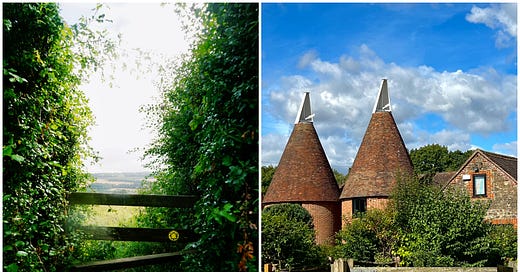

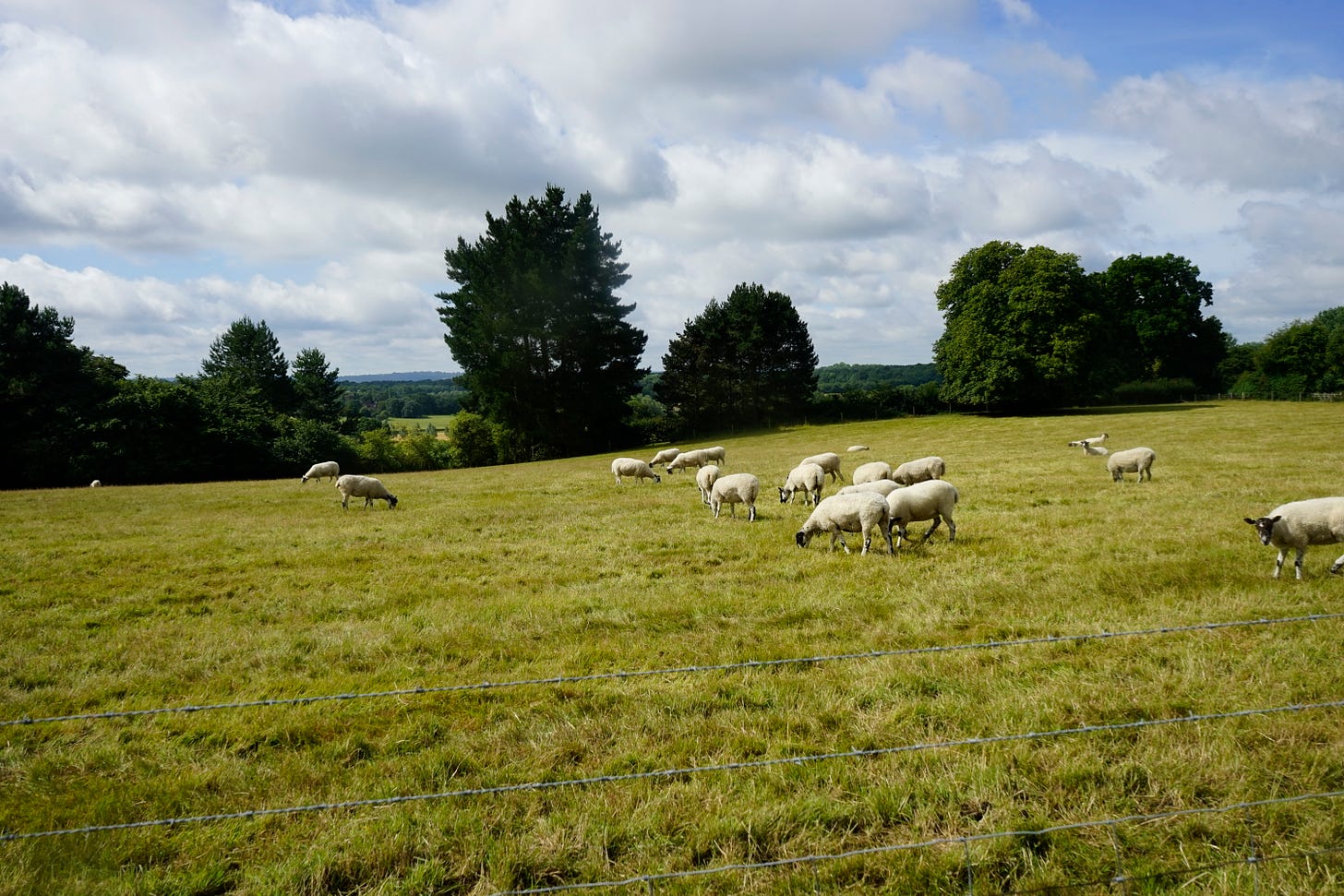
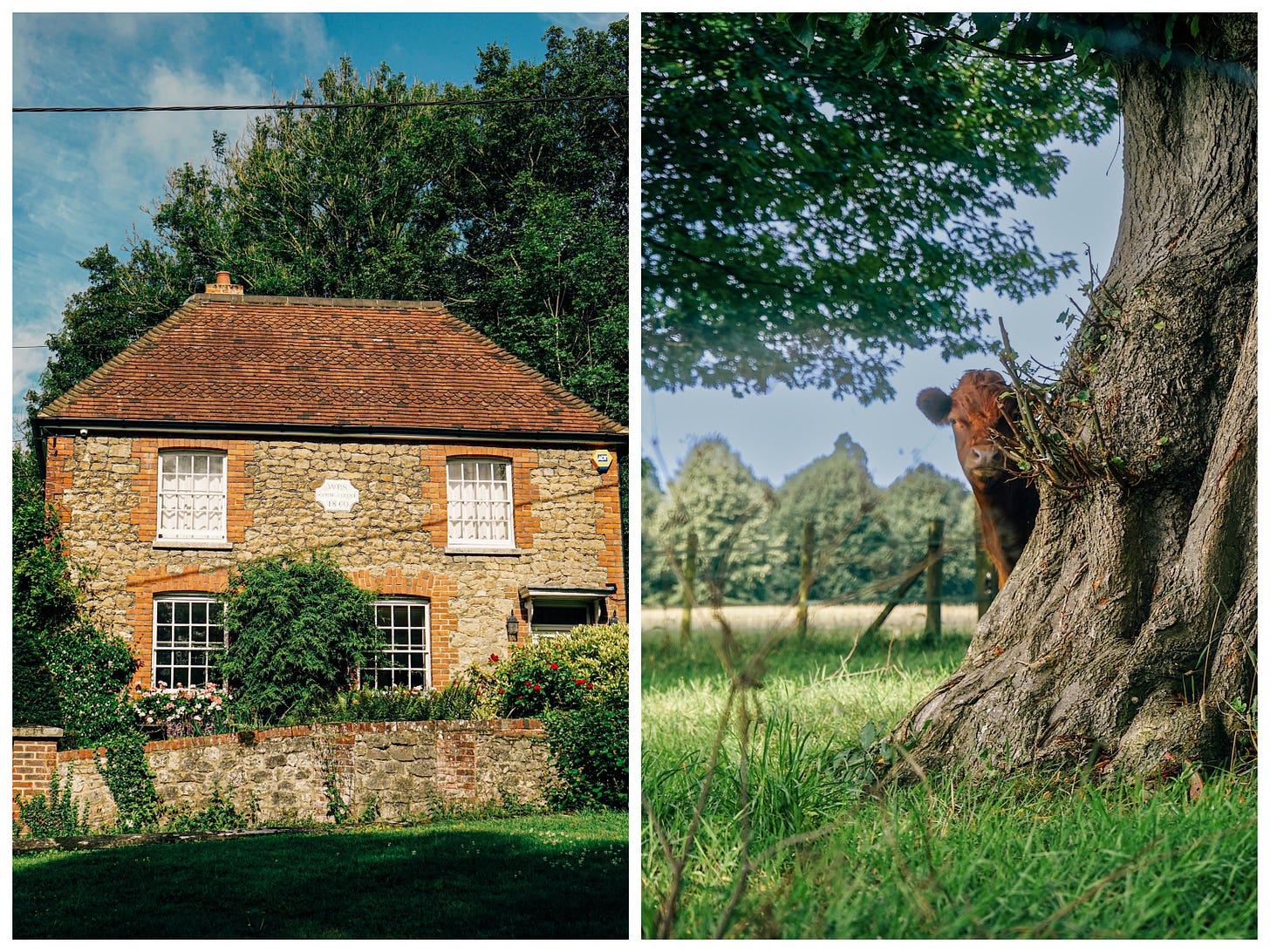

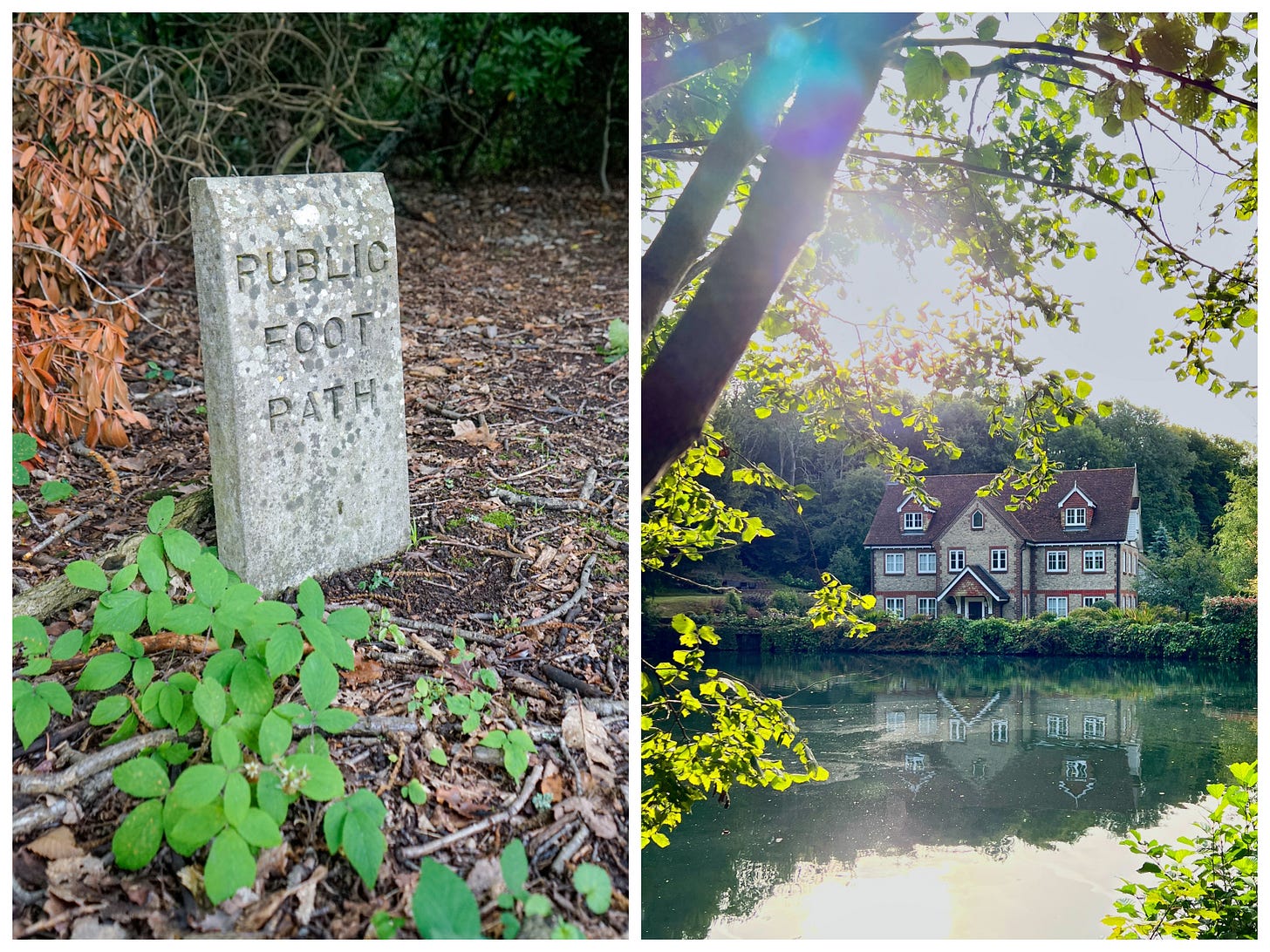
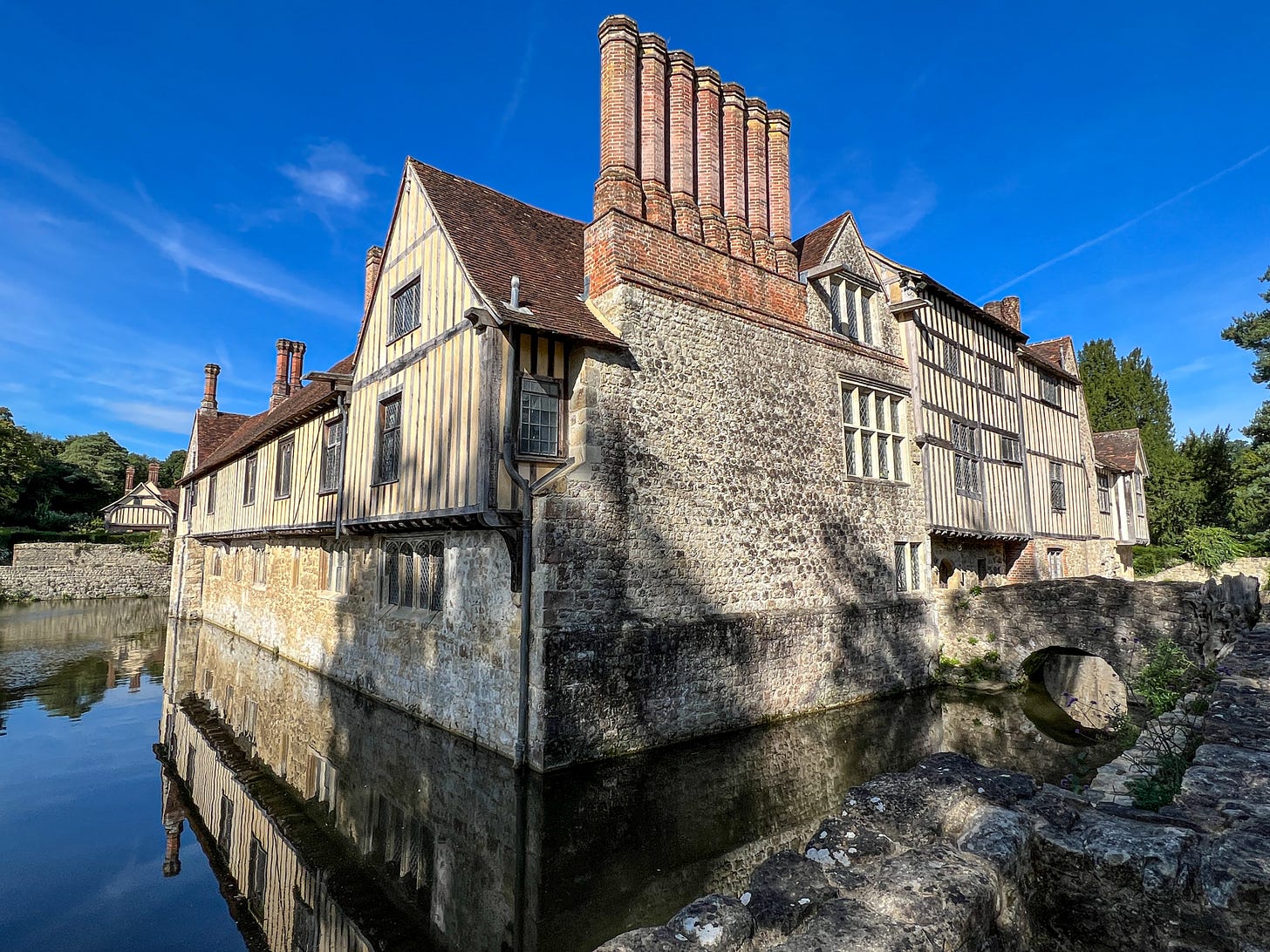

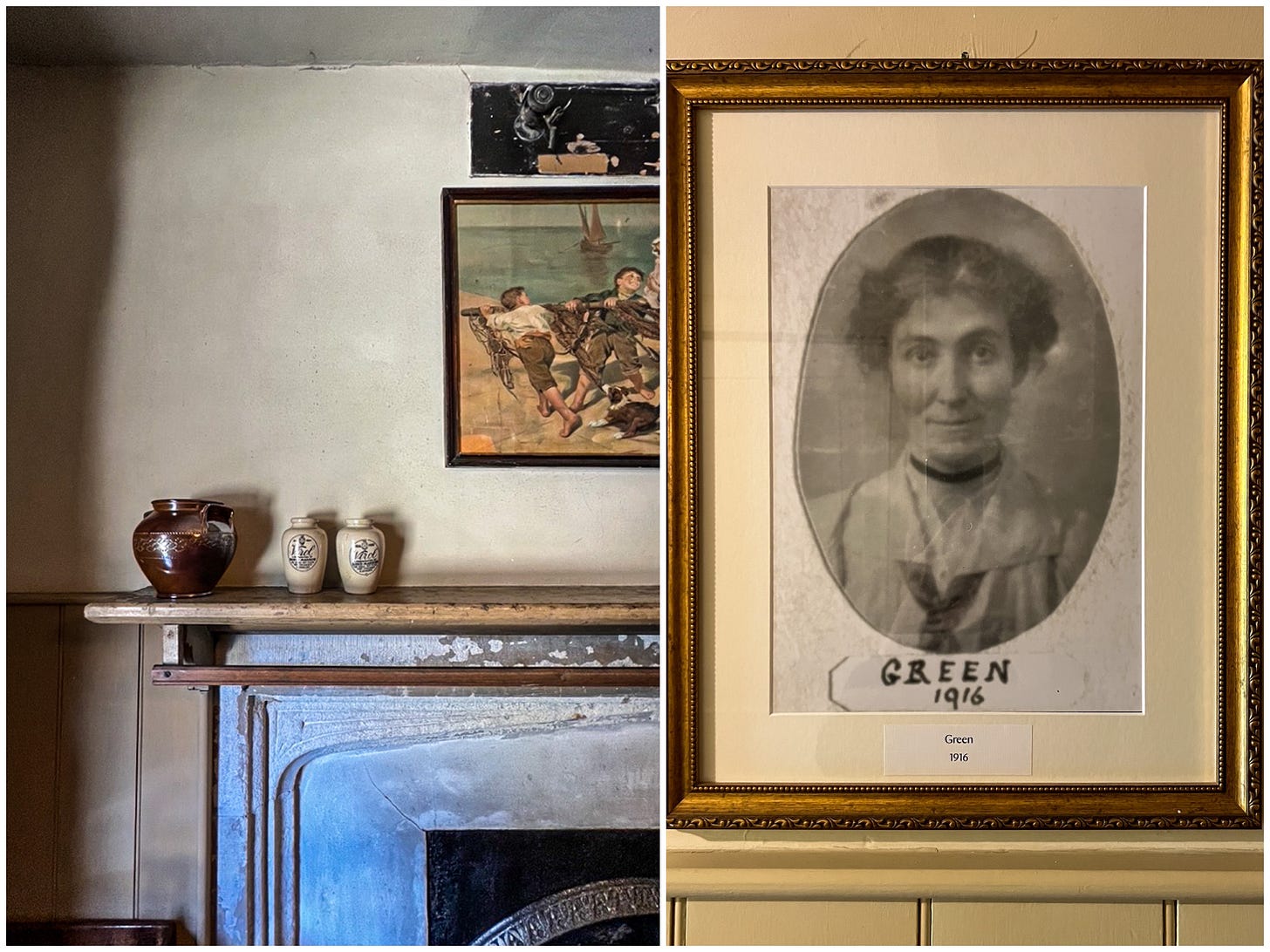
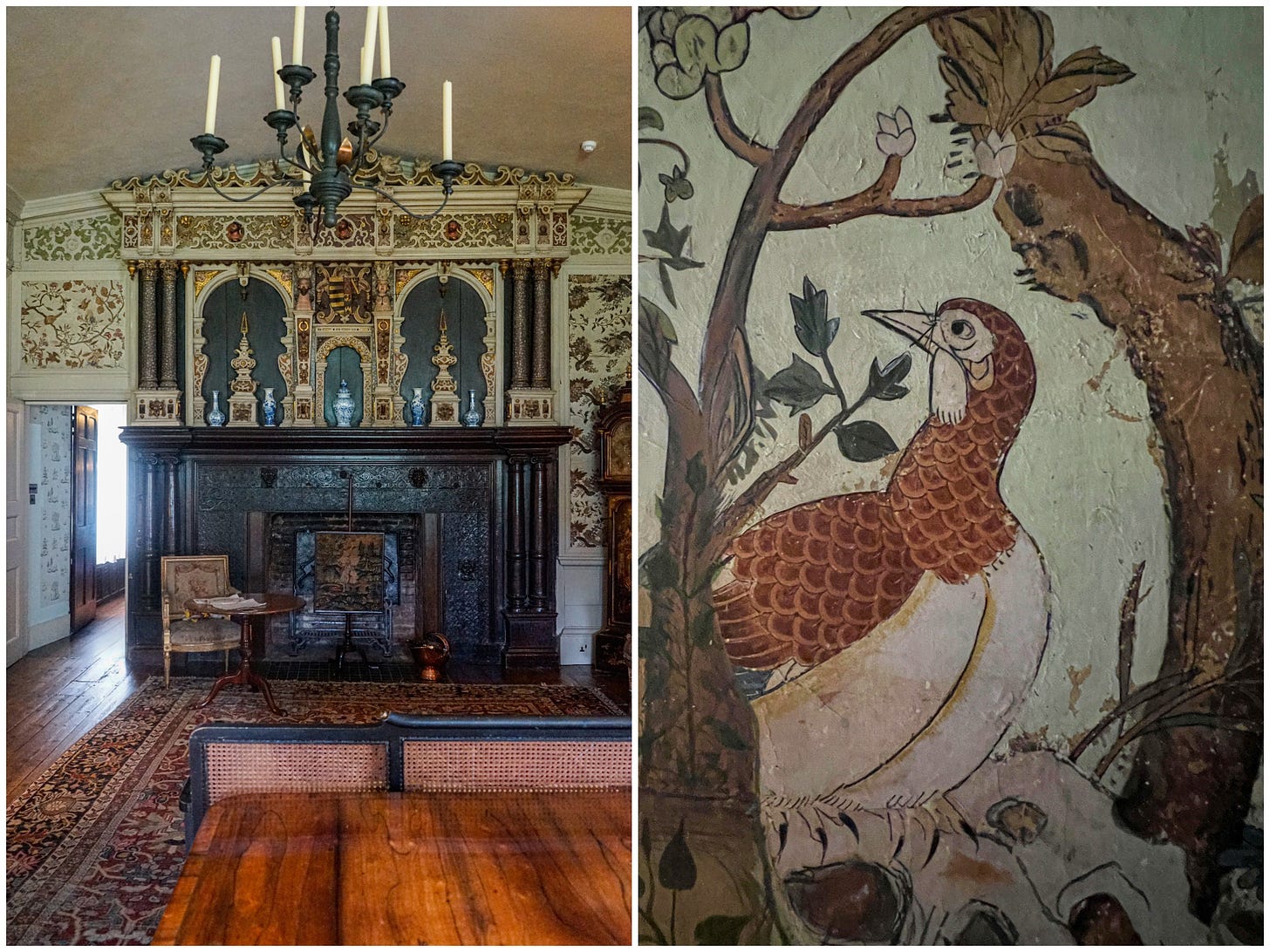
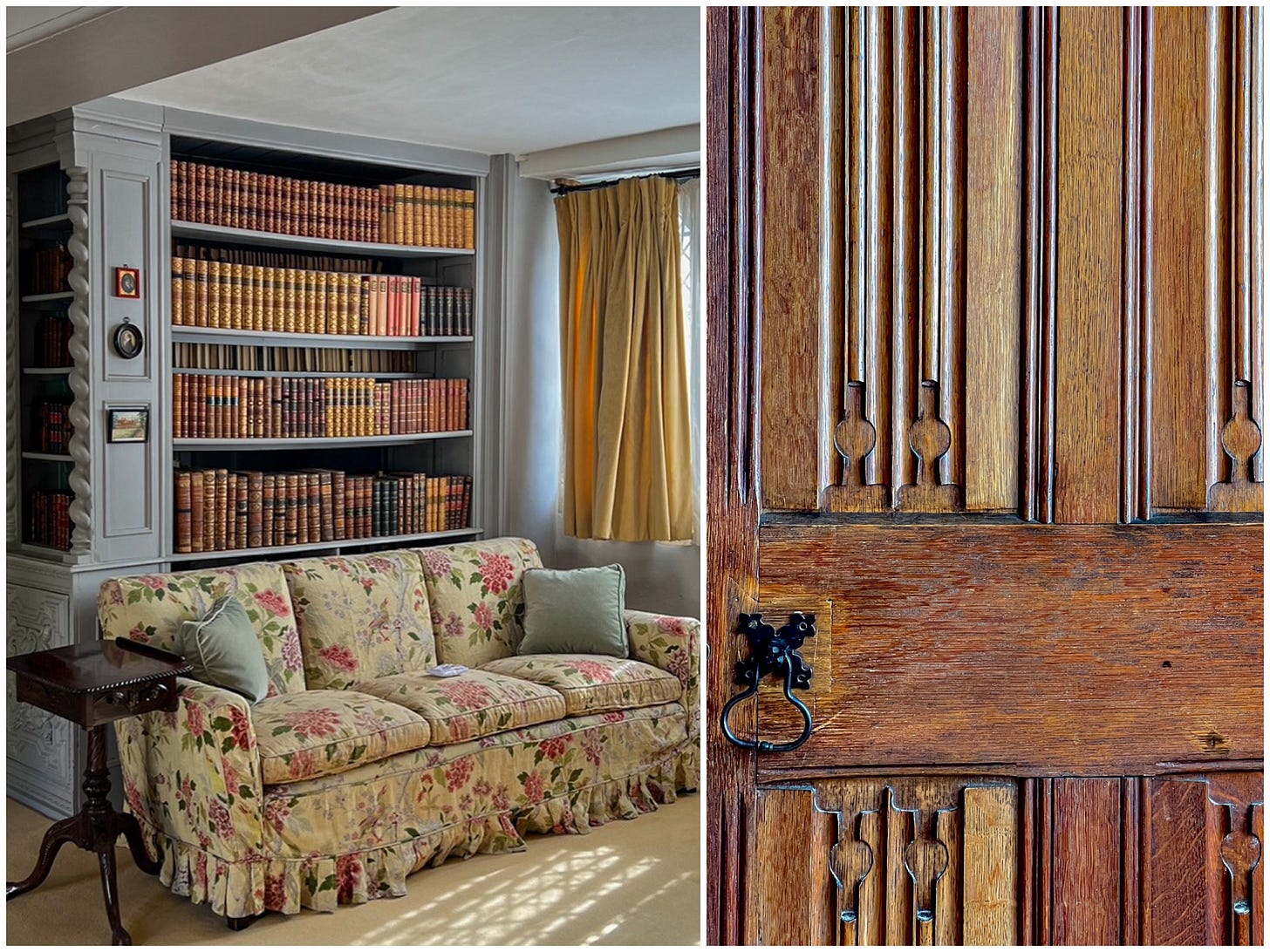
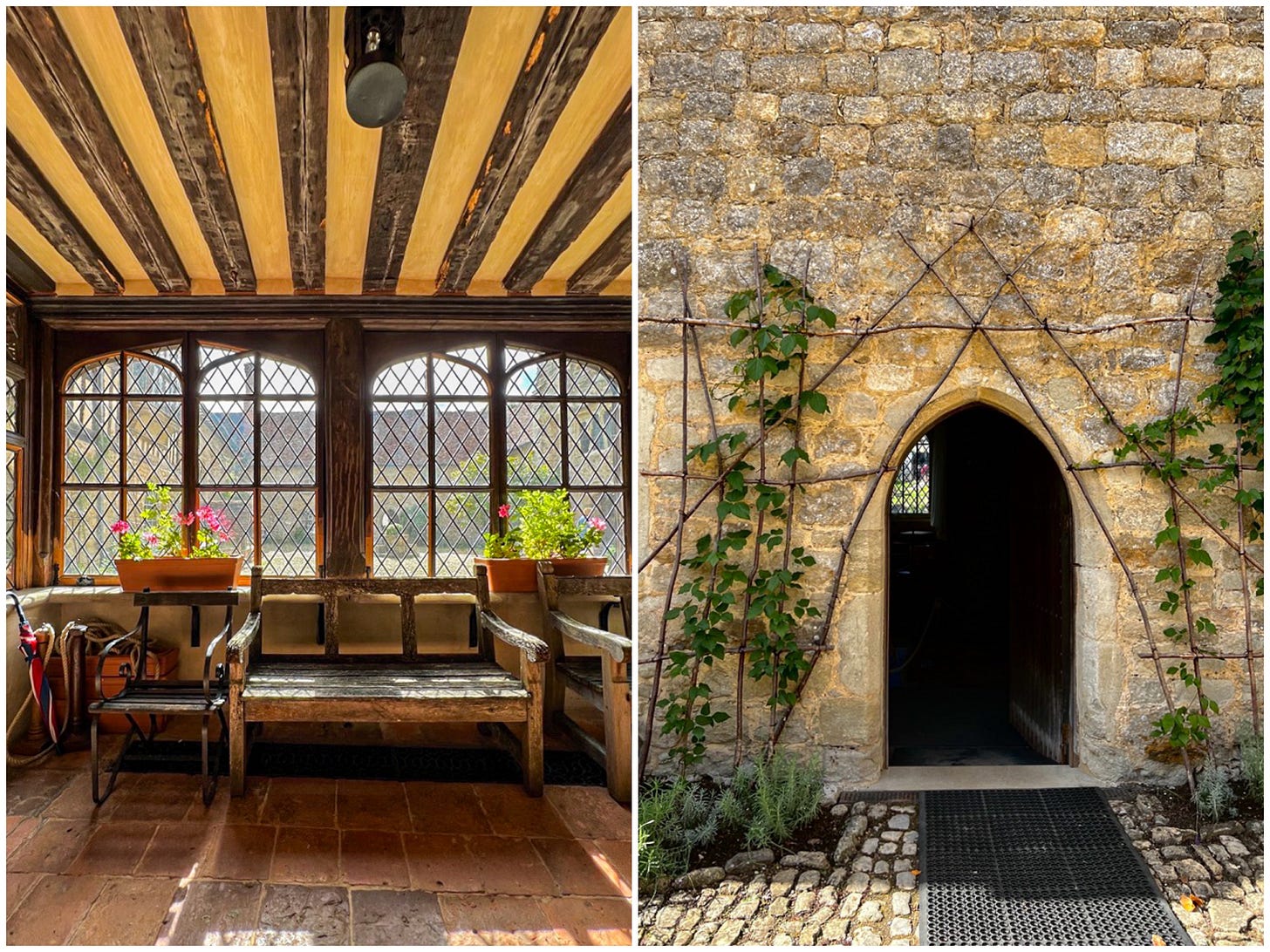
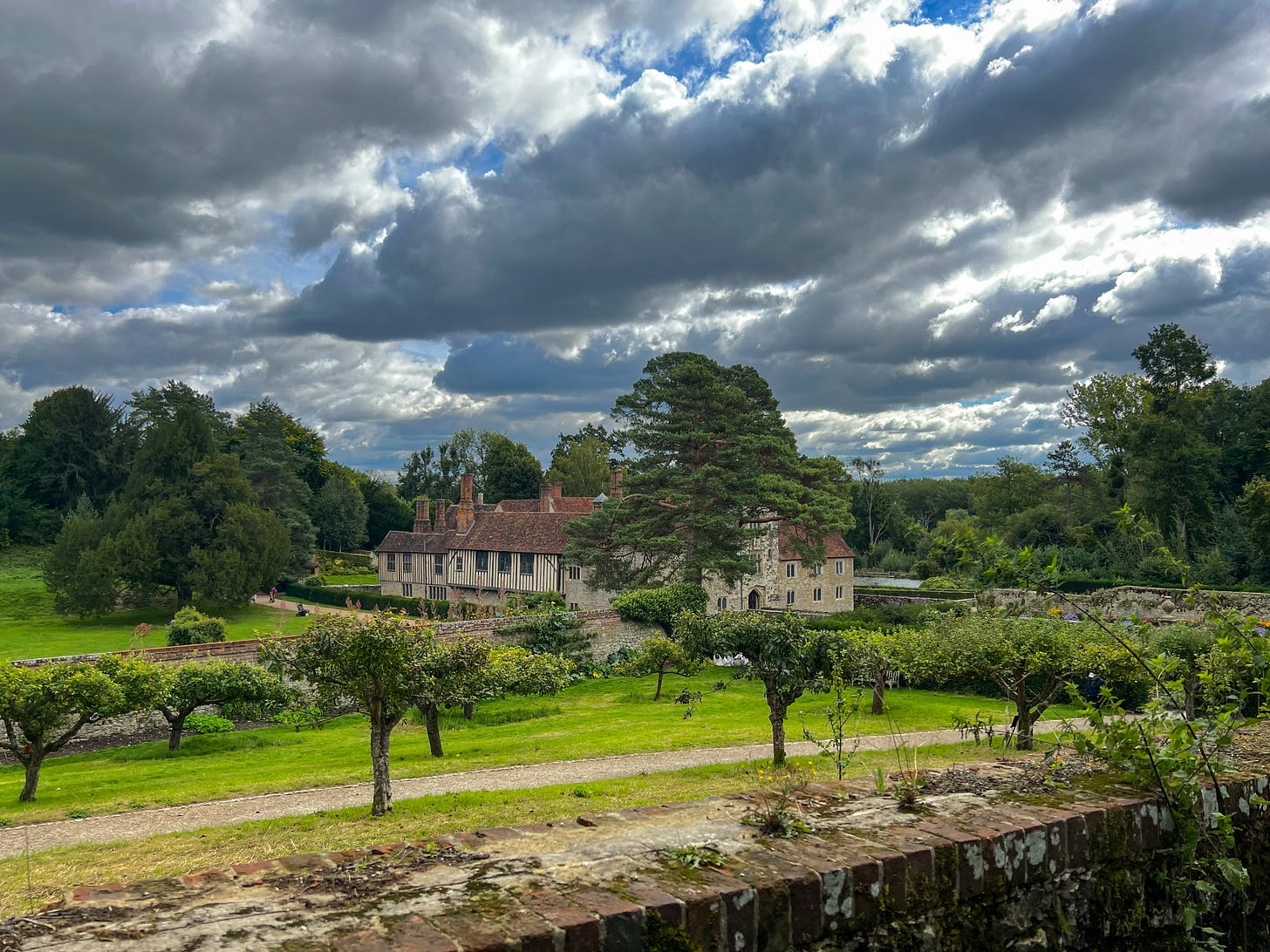
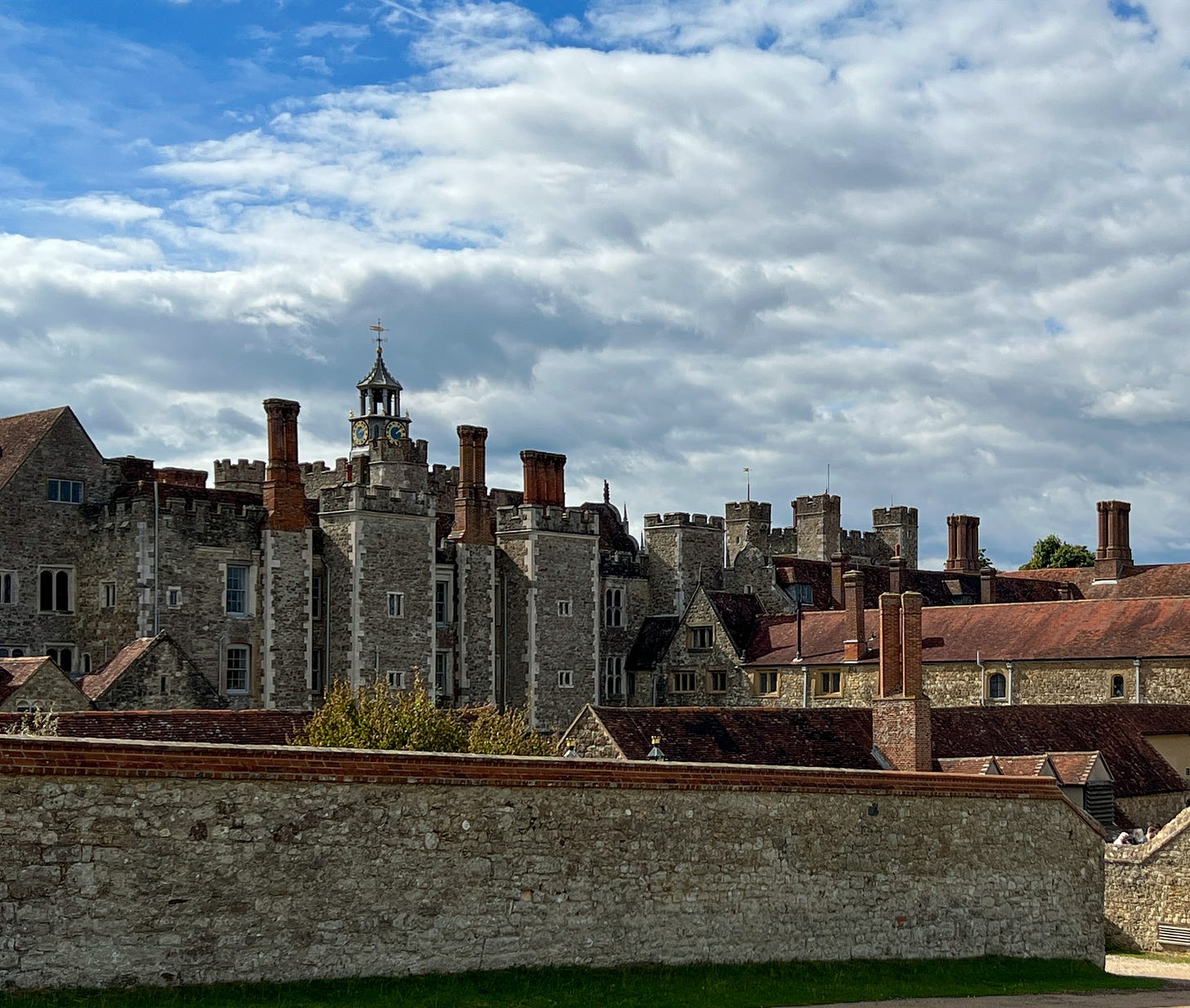
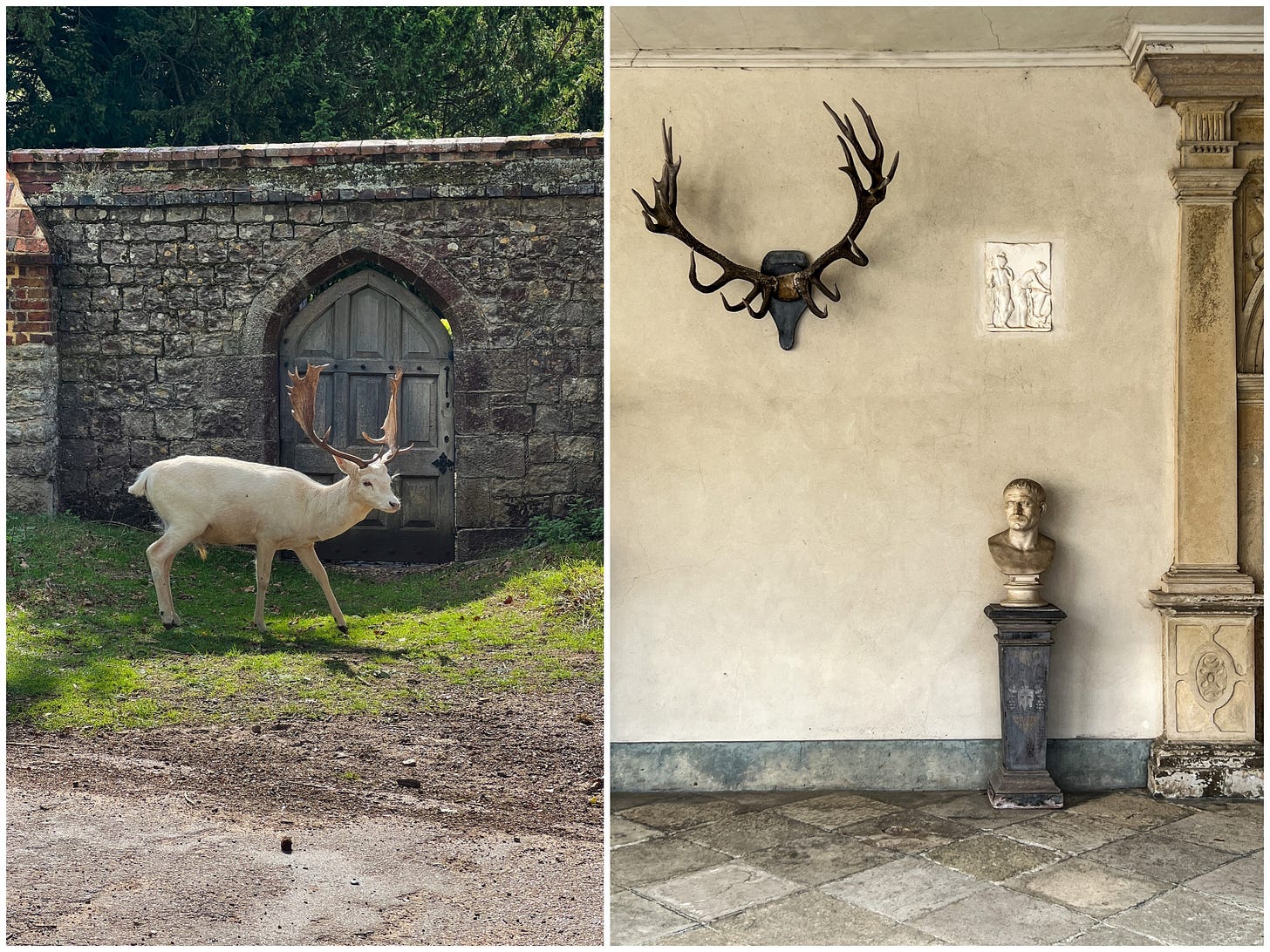
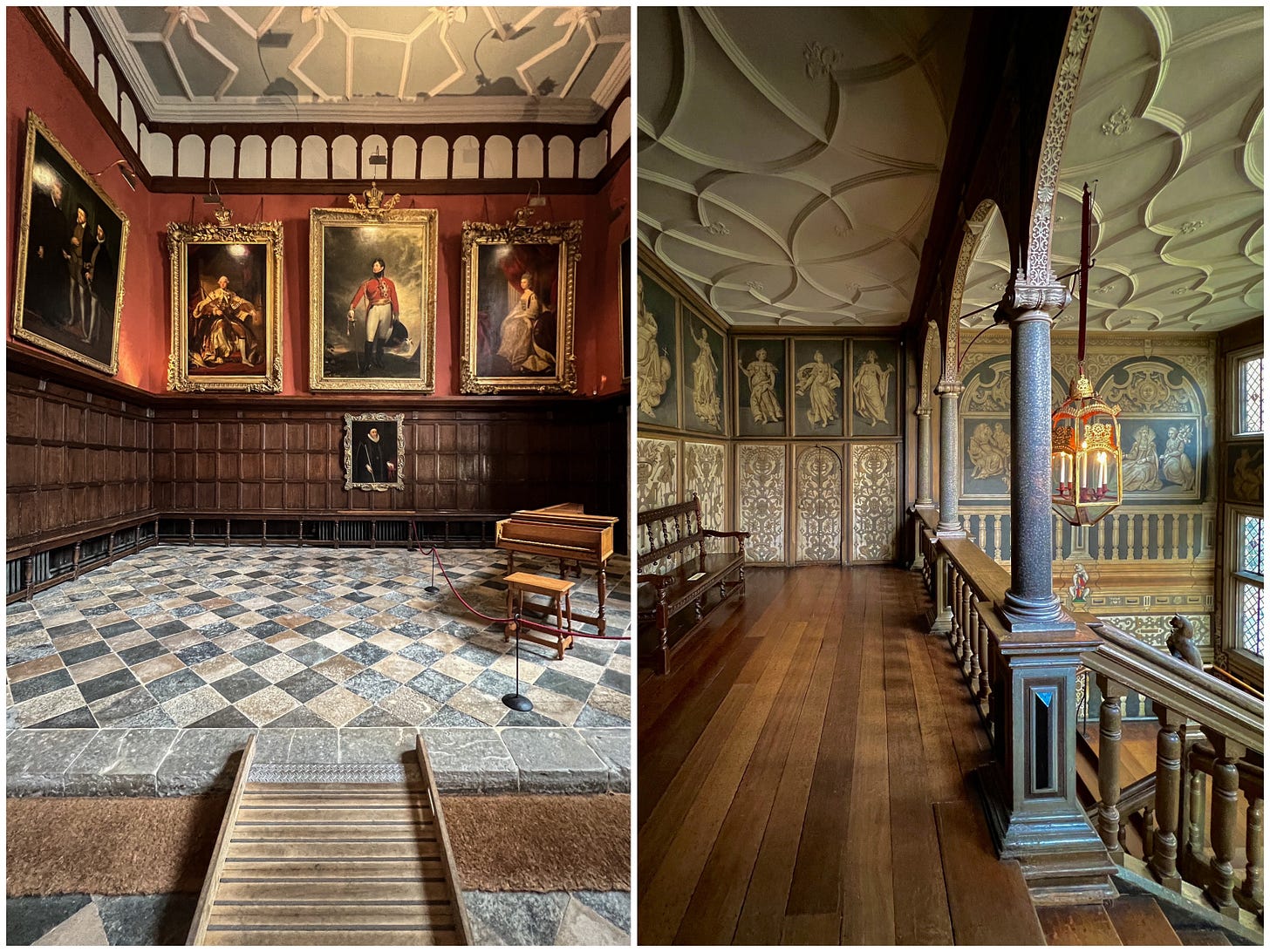
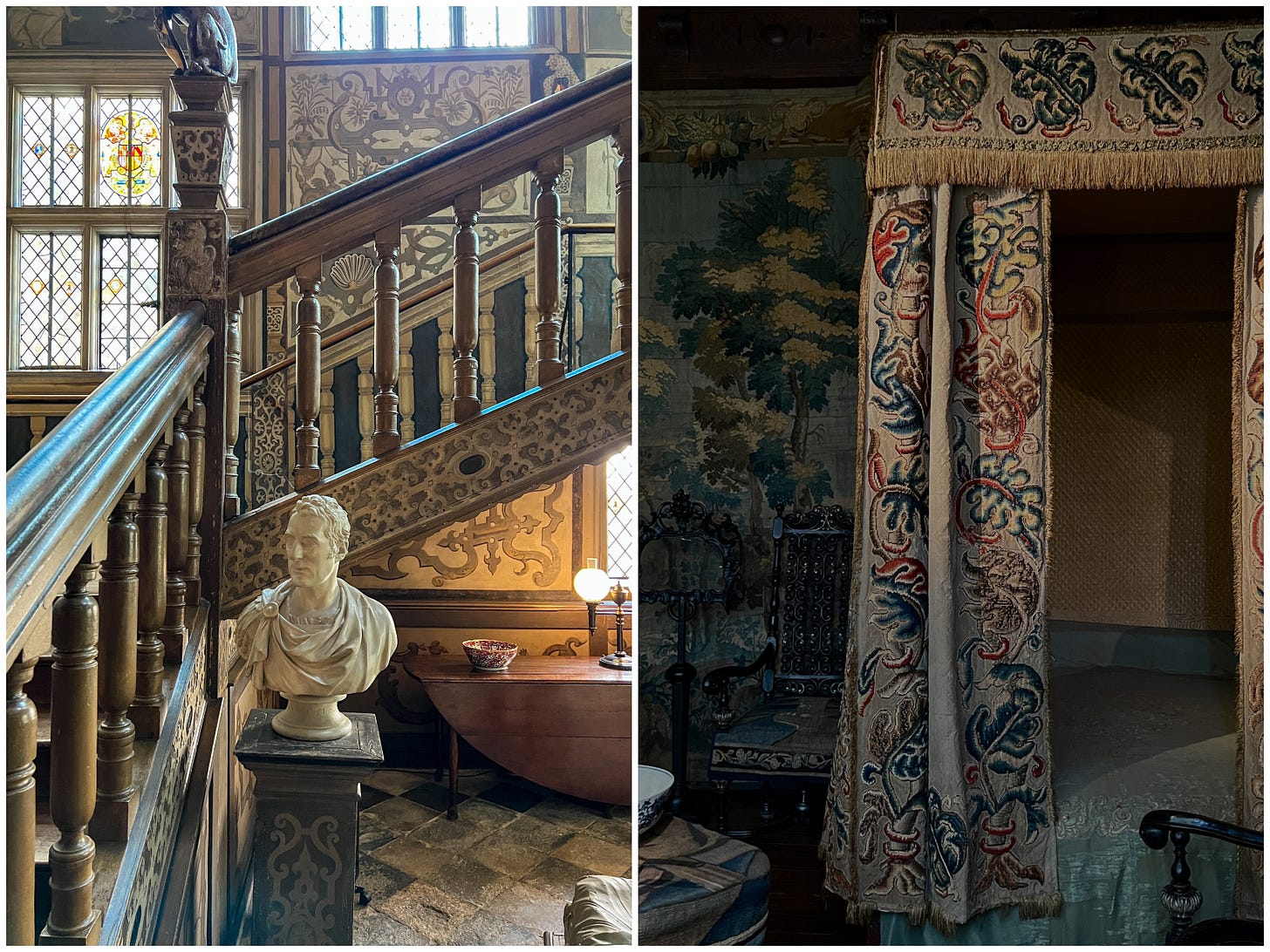
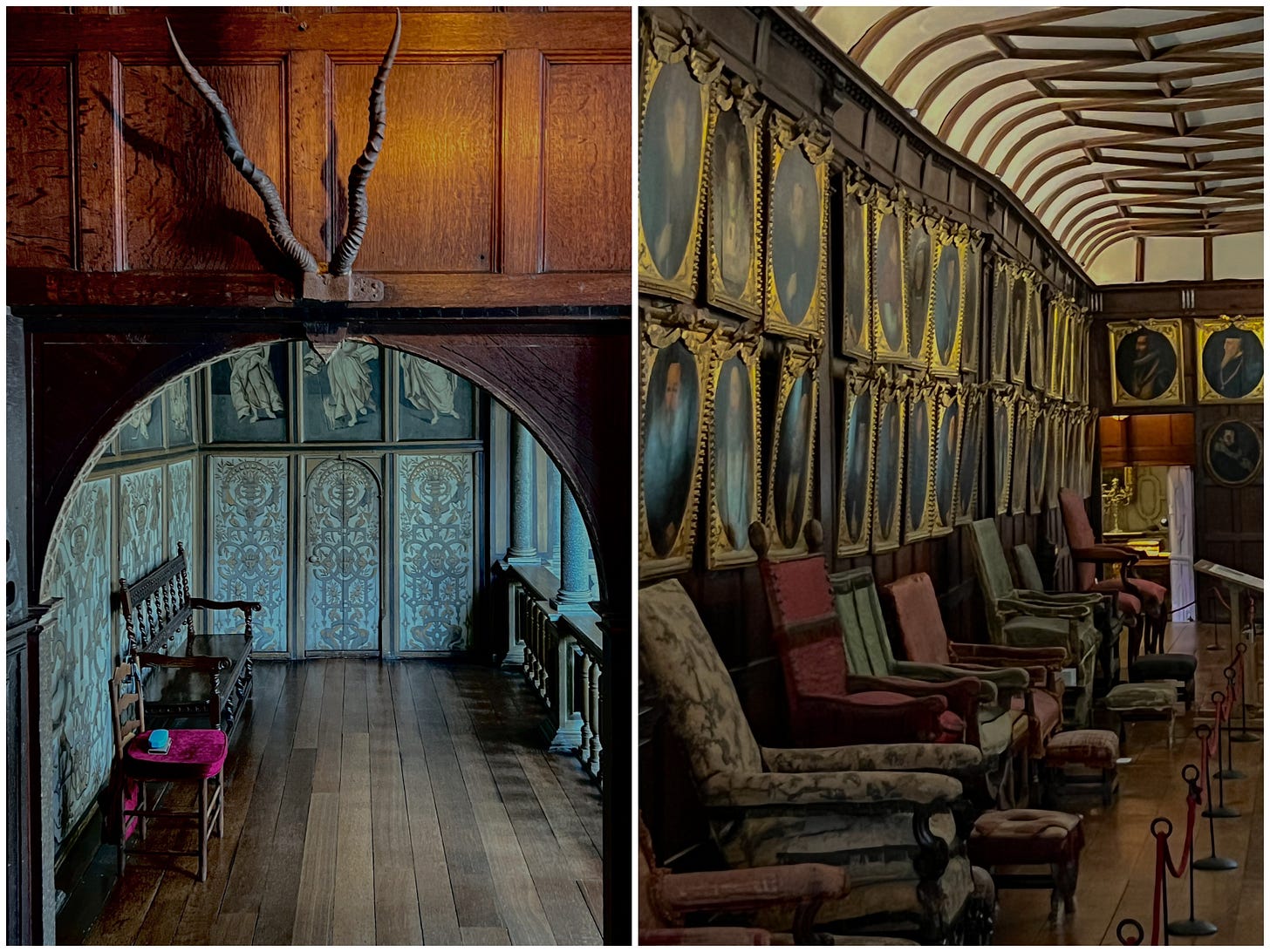
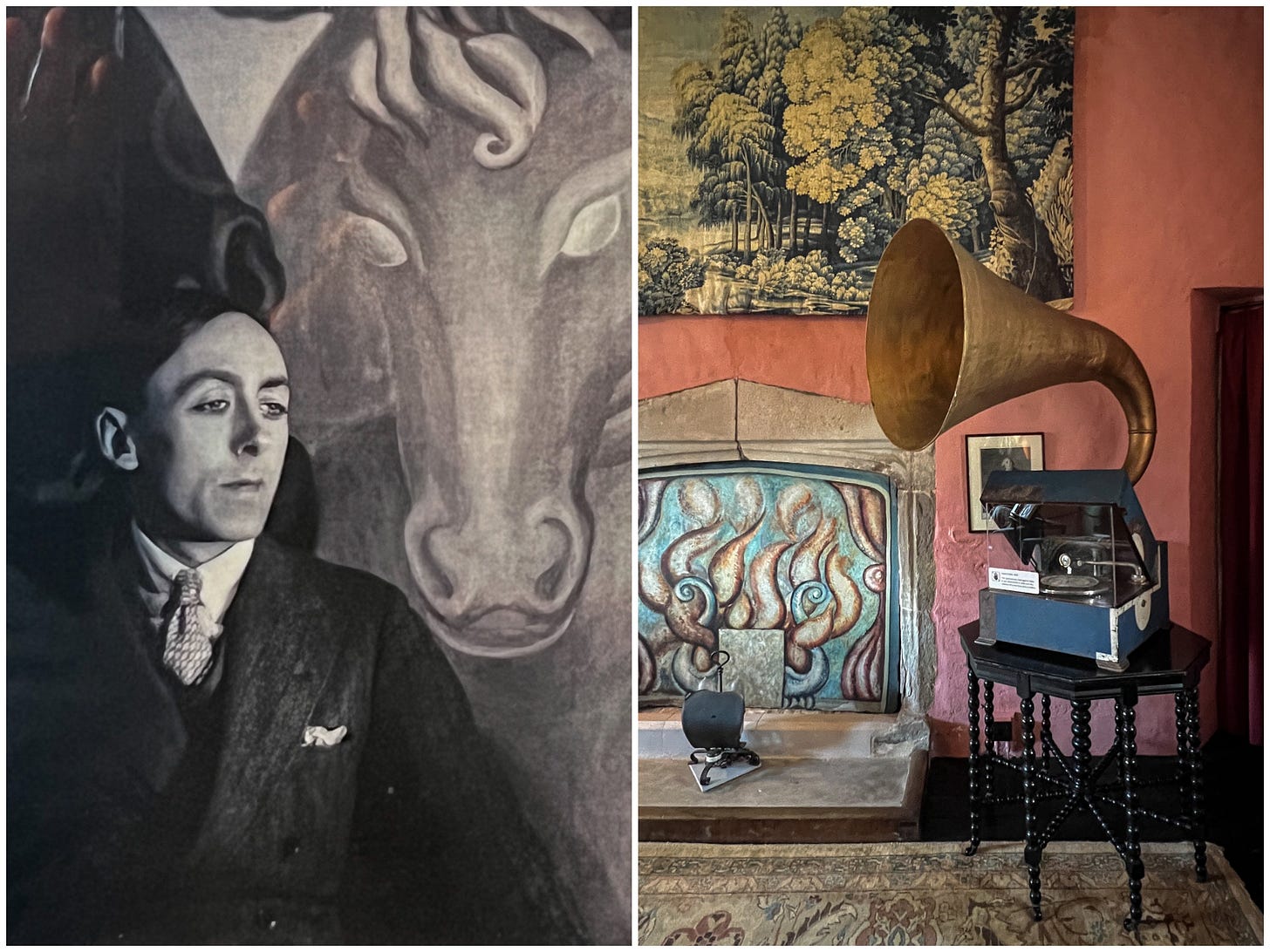
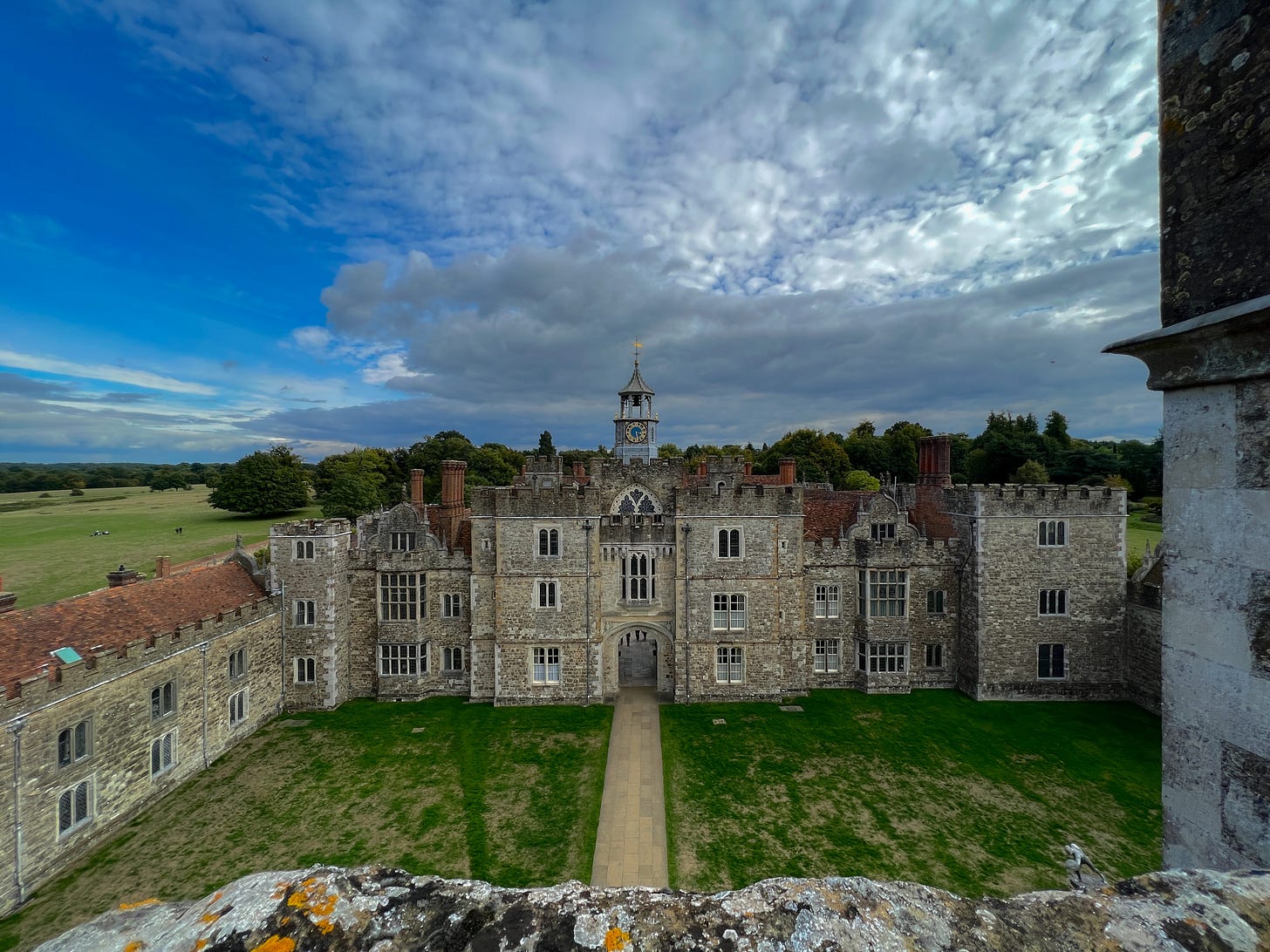
Oh I’m absolutely doing this next trip. That floral slip covered sofa! And the servant, Green, 1916! The curved ceiling of the long gallery sure is beautiful. I bet the smell of those houses is completely enchanting. Thank you for this, Lisa!!
Glorious!!